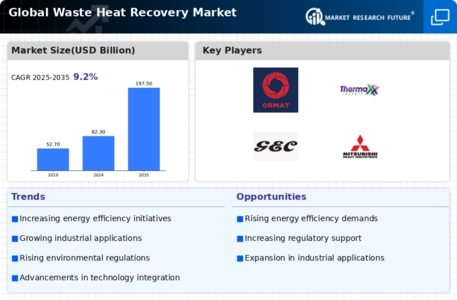Waste Heat Recovery Market Summary
As per MRFR analysis, The Global Waste Heat Recovery Size was estimated at 80.45 USD Billion in 2024. The Global Waste Heat Recovery industry is projected to grow from 87.11 USD Billion in 2025 to 193.18 USD Billion by 2035, exhibiting a compound annual growth rate (CAGR) of 8.29 during the forecast period 2025 - 2035.
Key Market Trends & Highlights
The Global Waste Heat Recovery is poised for substantial growth driven by technological advancements and increasing industrial demand.
- North America remains the largest market for waste heat recovery technologies, reflecting robust industrial activity.
- Asia-Pacific is identified as the fastest-growing region, propelled by rapid industrialization and energy efficiency initiatives.
- Heat exchangers dominate the market as the largest segment, while recuperators are emerging as the fastest-growing segment.
- Key market drivers include rising energy costs and regulatory support, which are fostering investment in waste heat recovery solutions.
Market Size & Forecast
| 2024 Market Size | 80.45 (USD Billion) |
| 2035 Market Size | 193.18 (USD Billion) |
| CAGR (2025 - 2035) | 8.29% |
Major Players
General Electric (US), Siemens (DE), Schneider Electric (FR), Mitsubishi Heavy Industries (JP), ABB (CH), Bosch (DE), Caterpillar (US), Clyde Bergemann (DE), Ceres Media (US), Ormat Technologies (US)


















Leave a Comment